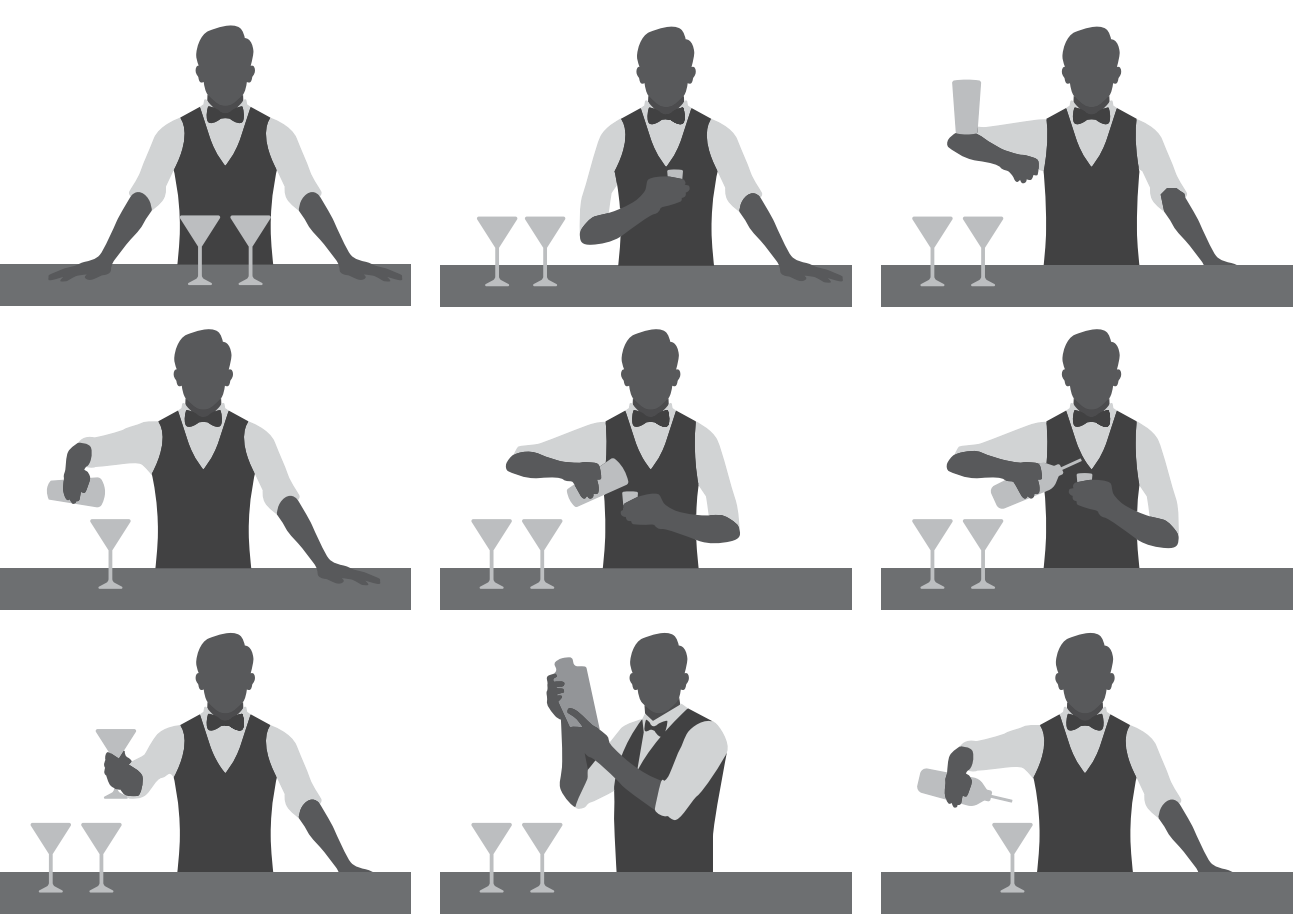Beer
A beer is an alcoholic beverage made from yeast-fermented malt and flavored with hops. The malted cereal grains used could include barley, wheat, rye, corn, or rice; but the base grain is typically barley and the alcohol level in a typical beer can range from 2% Alcohol By Volume (ABV) to 15% ABV. There are many different kinds of beers however, generally speaking, all beers are either lagers or ales. Further differentiation arises when flavor, color, and aroma are considered, which deteremines the style family of a beer. Going even further, within a style family there are different varieties of beer which are based upon other characteristics.
Ales
Ales can be determined by the temperature at which brewing is carried out ( 65°F to 75°F ) and the type of yeast used during the fermentation process, namely yeast that ferments at the top of the beer mixture. The higher temperature allows for a shorter fermentation period when compared to lagers. The yeast used is called saccharomyces cerevisiae, or more commonly referred to as top fermenting or ale yeast, and it ferments throughout the beer, settles at the top of the liquid, and has a higher tolerance to alcohol. Due to this higher tolerance, this yeast can be used to make beers with a higher ABV. Both ales and lagers can range in color from light to very dark, but ales tend to be darker than lagers and, as a result of the warm fermentation method, have a sweet, full-bodied and fruity taste.
Lambic
Lambic beer is only produced in a small region of Belgium and is fermented spontaneously by being exposed in open vats to wild yeast and bacteria. The beer is stored in barrels and aged for up to three years. As a result of spontaneous fermentation and aging, lambic beer gains a distinct flavor often described as being dry and cidery with a sour aftertaste and a cloudy appearance. To counterbalance the sour taste, many lambic beers are also fermented with fruits.
American Wild Ale
Similar to Lambic, American wild ales are exposed to bacteria or wild yeast, typically a strain of Brettanomyces, in addition to being fermented using S. cerevisiae. The use of wild yeast results in what others have referred to as a "funky" flavor.
Mild Ale
Mild ales originated in Britain, but the term "mild" was originally used to refer to young beers that were unaged and considered finished within a matter of weeks after brewing. Today however, mild ale is considered a style which is usually based on mild malt or pale malt, lightly hopped, lower in alcohol (typically around 3% to 3.8% ABV), and tends to be dark but ranges in color from copper to a very dark brown.
Brown Ale
Brown ales range from deep amber to brown in color and from 4.3% ABV to 6.2% ABV. They have a caramel and chocolate flavor to them, but certain characteristics differ depending on where they are produced. Northeastern England's brown ales are usually strong and malty, southern England's are sweeter and lower in alcohol, and North American brown ales are drier and tend to be medium-bodied.
Pale Ale
Pale ale is a style of beer made mainly with pale malt. It is distinguished by being moderately "hoppy", which in this case refers to bitterness and flavor, with a balance of malt flavors.
Irish Ale
Characterized by their reddish color, Irish ale, or Irish red ale, has malt accents, a slightly sweet flavor palate, and tends to not be bitter and has a tea-like flavor.
Belgian/French Ale
Belgian and French ale style of beers range vastly in terms of flavor, color, and strength. Belgian ales are brewed using Belgian wild yeast that produces high levels of ester, which gives beer a fruity and spicy character. These characteristics are further accentuated by employing high temperature fermentation, sometimes allowing it to rise to around 80°F.
Stouts & Porters
The name stout, namely brown stout, was originally used to identify the stronger version of the porter. Depending on the style, stouts are roasty and may have caramel and hops flavor too with a roasty malt aroma and are typically opaque deep brown or black in color. Porter is acidic or dry in taste with a creamy roasty-toasty malt flavor. It has predominant notes of rich chocolate, a roasty maltiness aroma, and is opaque in color. Today there is not much of a noticeable difference between porters and stouts.
Cream Ale
Cream ale is a style of beer that is 4.3% ABV to 5.7% ABV, is light in color and body, and is made using a warm fermentation (top or bottom fermenting yeast) and cold lagering. Even though it is called an ale, it may be classified as a lager or a hybrid since bottom fermenting yeast is acceptably used during brewing competitions.
California Common
A 100% American style beer that is also referred to as steam beer, California common is medium amber to light copper in color, is generally clear, and has an ABV of 4.5% to 5.5%. It is made by fermenting lager yeast at temperatures used to ferment ale yeast. This beer is a lightly fruity beer that is medium-bodied and moderately malty, toasty and caramelly, with assertive hop bitterness and traditional American hop characteristics.
